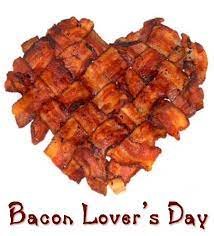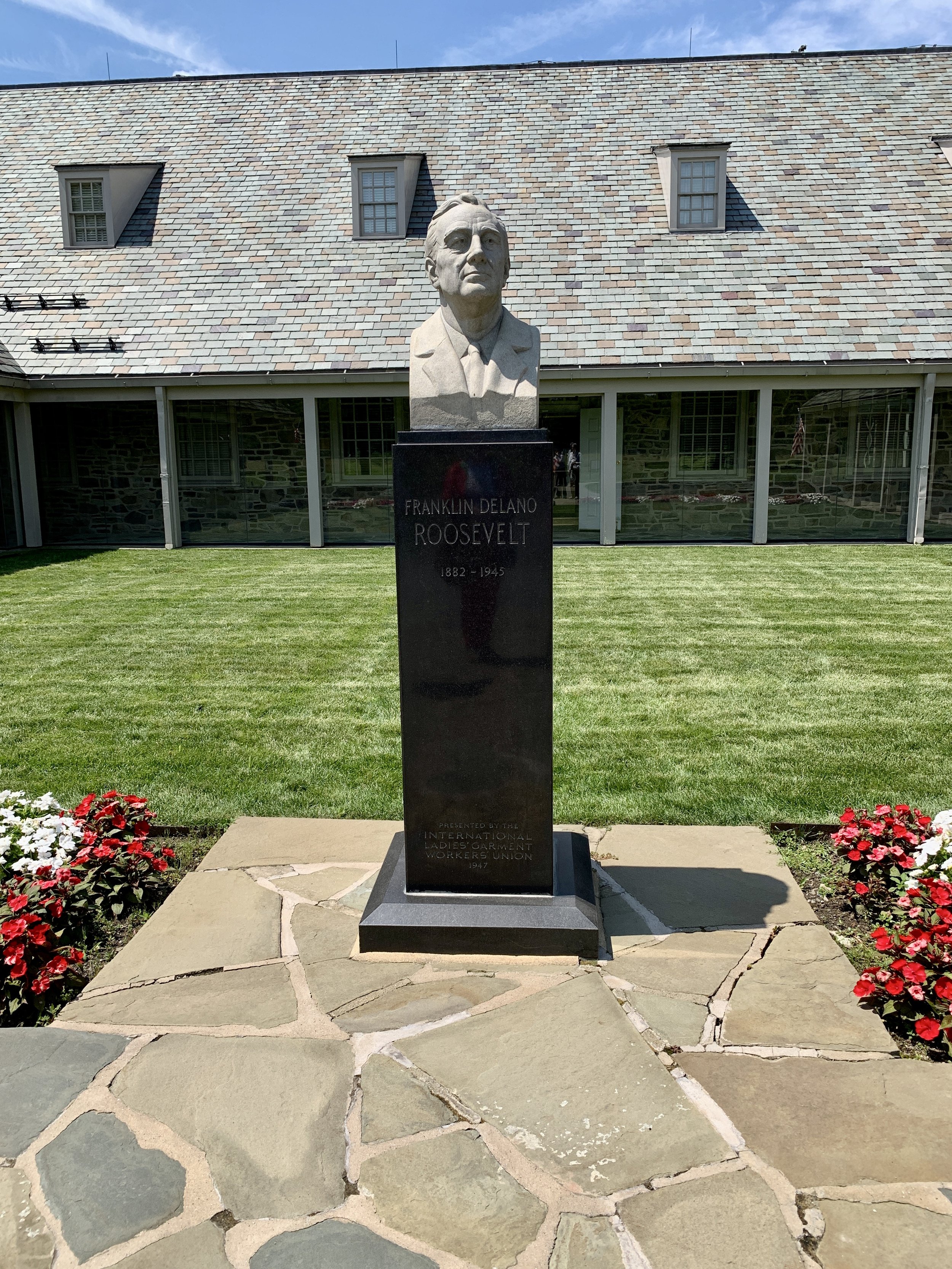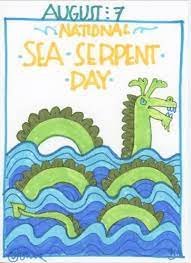This is what a bubble looks like in mid-pop.
For Your Funny Bone . . .
Contributed by Bobbi Roggemann
Contributed by Bobbi Roggemann
Contributed by B Bobbi Roggemann
Special Observances, August 14 – 20, 2023
AUGUST 14: WORLD LIZARD DAY
Every year, World Lizard Day celebrates a specific type of reptile: lizards. Does thinking about lizards induce ennui? Ridiculous! Lizards are fascinating. There are about 6,000 lizard species, spread out over every continent except Antarctica. As you ponder the miraculous opposable thumb of human beings, consider these features of the lizard:
Most kinds of lizards absorb water from their food, which means they don’t need to be near water.
Lizards range in size from 2 inches in length to over 11 feet.
A lizard has a tail that regenerates. If it breaks off, no sweat: it grows another one.
Some lizards can change colors.
The lizard, which has been around since the dinosaurs, is a reptile characterized by its scaly skin a long body and tail, four legs, and moveable eyelids. Cold-blooded, they need sunshine in order to survive. Most lizards lay eggs, however, some lizards birth live babies. To protect themselves, lizards have many different defense mechanisms. Some of them can run like hell to escape danger. Others can make themselves appear scarily larger when confronted by an enemy. Some, like the Gila monster and Mexican bearded lizards, have venom. The venom of the Komodo dragon is so strong it can kill a human. Consider that should you ever find yourself on Indonesia’s Komodo Island.
World Lizard Day is mostly about lizards as pets. Over 9 million people in the US have lizards as pets, most commonly the African fire skink, chameleon, gecko, green iguana, long-tailed lizard, Chinese water dragon, and the bearded dragon. Doing research before you buy or adopt a pet lizard will help you figure out what kind of lizard would best suit.
AUGUST 15: I LOVE COWBOYS AND COWGIRLS DAY
I Love Cowboys and Cowgirls Day is a day to honor, reflect on, and celebrate the legacy of cowboys and cowgirls. The dawn of cowboys and cowgirls started with the Spanish, who brought cattle-raising traditions and horses to the Americas in the 16th century. The term cowboy, which is the English translation of the Spanish word for “vaquero,” first appeared in 1725. A vaquero was an “individual who managed cattle while on horseback.” The word derives from “vaca,” which means “cow.” Today, cowboys tend cattle on ranches. Historically, they herded and drove cattle in the West and South, and their role has since become one of legend, romanticized in Wild West shows, song, and television and film. The first major cattle drives took place in the 1860s. Cattle were driven north to railheads by cowboys and then transported to northern slaughterhouses. Whites, many of whom had participated in the Civil War; African Americans, who many times were treated better in the frontier environment; Mexicans; and American Indians all worked as cowboys. The birth of barbed wire and, a harsh winter in 1886-1887 lead to the collapse of the cattle industry, and the expansion of railroads to areas previously out of reach killed the need for the cowboy.
Cowgirls perform the same ranch tasks as modern cowboys, but their historic contributions were not well-documented. Many women worked on ranches and, in some cases, ran them. Cowgirls rose in prominence with the rise of Wild West shows and women such as Annie Oakley. The National Cowgirl Hall of Fame and Museum has worked to illuminate the role of cowgirls.
AUGUST 16: NATIONAL BRATWURST DAY
Sadly, not everyone has had the pleasure of enjoying a bratwurst. Hence National Bratwurst Day. Typically made from pork, bratwurst can, in fact, be made from any meat. Sometimes known by the nickname “brat,” bratwurst is a heavily spiced sausage usually enjoyed either on its own with a side of sauerkraut or on a roll with mustard. The word “bratwurst” comes from two German words: “wurst” is the word for sausage; “braten” means “to fry.” Pretty much says it all.
Bratwurst has been around since 1313. It was introduced to the US in the mid-19th century by German immigrants. In Germany, brats are a snack food, mostly seen in pub-like establishments, with the addition of sauerkraut or potato salad and dense rye bread and pretzel. New York City may have hot-dog vendors, but Germany has bratwurst carts!
Very traditional recipes for bratwurst call for both eggs and cream, but every region in Germany has a different type of bratwurst recipe: 40 varieties in all! Franconian bratwurst recipes, for example, are usually heavily laden with marjoram, a method that dates back to the first bratwurst. These bratwursts tend to be large and filled with coarsely ground meat, which gives them an overall juicier texture and flavor. Those from Corburg, on the other hand, only use salt, pepper, nutmeg, and lemon zest. Bratwurst recipes in the US can also differ region by region. No matter the size, shape, or innards, World Bratwurst Day celebrates all varieties and encourages us to explore the culinary world of the brat! Note: most people like to accompany bratwursts with a cold beer. Win-win.
AUGUST 17: NATIONAL THRIFT SHOP DAY
National Thrift Shop Day celebrates the thrift shop. Thrift shops aim to help those most vulnerable in communities. Known by myriad names, thrift shops are also referred to as consignment stores, second-hand stores, resale shops, and hospice shops.
Before thrift shopping became common, people usually liked to repurpose their clothes. During the 18th century, hand-me-downs to younger siblings proliferated or were remade into a different style. When they had exhausted their use as clothing, the material would be recycled as furniture stuffing. While people often sold their items if they needed money, the thrift shop concept had not yet been created.
By the late 19th century, the US experienced a massive cultural shift. The Industrial Revolution increased the production of clothes and goods. At the same time, the country saw a flood of new immigrants. Many new to America — in addition to rural folk — moved to urban areas. The process of buying new clothes and disposing of old ones quickened. Pawnshops and scrap yards arose, but clothes once owned by a stranger indicated a lower social status and were off-putting.
Meanwhile, Christian ministries needed funding for their outreach programs, and religious affiliation groups such as the Salvation Army and Goodwill changed the narrative. In 1897, the Salvation Army launched the “salvage brigades,” residents who went around the neighborhood asking for used clothes. In return, they’d receive food and lodging. Then, In Boston 1902, a Methodist minister created Goodwill, which hired poor and disabled people to collect goods and make necessary repairs to them. These shops provided immigrants with a place to find clothes, with the added intent of promoting “Christian values” alongside social service activities.
In the 1920s, thrift shops reflected the department stores of the time. Initial impressions began to change after thrift shops stopped being known as “junk shops.” By 1935, there were nearly 100 Goodwill stores nationwide. They were particularly useful in the Great Depression and World War II: an affordable option to full-priced stores, with the added advantage that the money from sales went to charitable programs. People warmed up to the idea of thrift shops as a way to find “vintage” items and niche goods. Ever since, the thrift shop has steadily shed its negative image. Another advantage: thrift shopping also helps the environment. Every item purchased from a thrift shop is one less item in a landfill. Recycling at its best!
AUGUST 18: SERENDIPITY DAY
Serendipity: the occurrence and development of events by chance in a happy or beneficial way. A happy accident; a pleasant surprise. Serendipity Day is celebrated to encourage people to confront unexpected good fortune.
Horace Walpole coined the word “serendipity” in 1754. He described the genesis of the term in a letter to his lady love, explaining that he was inspired by the Persian novel “The Three Princes of Serendip.” The story follows three princes banished from the kingdom of Serendip, (now commonly known as Sri Lanka) in order to demonstrate their worth. Serendipitously they encounter revelations not sought, while traveling the world. As a result, serendipity is associated with embarking on a journey and discovering something unexpected.
Serendipity Day was celebrated for the first time in the year 2010. Its goal is to inspire individuals to live their lives in a more opportune way, being open to and accepting of the limitless options that life presents.
AUGUST 19: NATIONAL HONEY BEE DAY
National Honey Bee Day — on the third Saturday in August — is a celebration for beekeepers, honey lovers, and all blooming things. The day recognizes both the honey bee and the beekeepers who tend the hives. It also encourages everyone to enjoy and buy locally grown honey. As important is learning about honey bees and providing them with a supportive environment. Planting wildflowers, orchards, and other flowering plants, supports pollinators such as honey bees. They depend on the nectar of a variety of plants for their survival. Conversely, we depend on honeybees for our survival, too! Without their pollinating abilities, many nutritious plants wouldn’t reproduce.
Honey bees do sting, but only if they perceive a threat, such as damage to their hive or being swatted at. Since they seek sweet nectar, sugary drinks and sweets will attract honey bees when flowers are not blooming yet. So, keep your beverages covered! If a honey bee comes close, either hold still or move slowly away. The honey bee will fly along to the next sweet thing as long as it doesn’t feel threatened.
AUGUST 20: NATIONAL BACON LOVER’S DAY
Hallelujah, it’s National Bacon Lovers Day! Hardly any other aroma on Earth is as stirring as bacon sizzling in a pan. Bacon has been such a massive part of western cuisine since 1500 BC. For thousands of years, we have relished the smell of bacon frying — not to mention its chewy taste. Note, however, that pigs were domesticated from around 8500 BC, so for seven thousand years, humans wasted the bacon right under their noses. How sad!
Bacon was such a desirable cut of pork that, in the 12th century, a church in the English town of Great Dunmow challenged the married men to a wager. If a man could go a complete year and a day without quarreling with his wife, a side of bacon would be the prize. Thus the term “bring home the bacon.”
Until well into the 16th century, the term “bacon” referred to any cut of pork. Only in the 17th century did the word indicate the product we know today. The late 1700s saw the rise of commercial pig farming and bacon production. With rising population rates and an increase in available machinery, bacon was one of the first food items to be mass-produced. Fast forward a couple of centuries to when the Industrial Revolution took the pork industry to a completely new level of production. Before then, bacon and other pork products were produced at home. Most people kept private pigs. Even in urban environments, it was common for people to keep pigs in their basements.
Bacon is still a household favorite. In the US, bacon refers to meat from the belly of the pig, known, logically, as pork belly. Bacon from the loin is called Canadian bacon. To make bacon, the pork is cured using salt and is then dried, boiled, or smoked. The smoking of bacon is often done with hickory, mesquite, or maple wood, and flavors such as brown sugar or maple may be added. More often than not, bacon is pan-fried. Popular as a breakfast food, it is also loved in sandwiches — such as the BLT or club sandwich — as a complement to salads, and as a wrapping for other foods. “Bacon mania” has swept the United States and Canada since the late 1990s. Despite the high sodium and nitrate content of bacon that lower its health benefits, there has been a great increase in the amount of bacon being eaten and in the number of new bacon recipes.
Wild Thing, Art and Poetry by Sheila Benedis
Wild Thing
I know who I am
a wild thing of nature
a bold eagle
trying to find my way
creative energy
wanting to mold
my art work
into organic shapes
I am a solitary delicate flower
With petals made of steel
Climbing life’s mountains
Wildly reaching for the top
Art by Hart
Emerson longed to meet someone who wasn't just another water porcupine
Their first on-camera date was an embarrassment for both of them: Dody had lied about her age, and Skip had lied about his species
When Chuck invited Marla for a romantic getaway, he had no idea about her baggage
The Nadels found city air curiously buoyant
Art and photos by Jane Hart
In and Around Kendal
After the Rain, from Alida, 2nd Floor, by Jane Hart
The Fauna of Kendal
Just Passing By. . .
This guy’s sticky feet allow him to cling to the Bruno’s window, by Joe Bruno
The Saga Comes to An End
These past few weeks we’ve been following the young bird family nesting under the leaf of a rubber plant on the Bender’s balcony: the nest building, the five eggs, the hatching . . . and now it comes to an end. The last little bird has flown the coop. Momma has tidied up and is ready to start life again without shells, constant feedings, and the ceaseless chatter of her brood. The rubber plant that shielded the avian family is on its own again.
The last one about to fledge
Momma’s closing up shop
One last look from the railing
Photos by Ginny Bender
Quick! Before he bolts!
The Kendal bunny (“If I hold perfectly still, they won’t see me”), by Carolyn Reiss
Out and About
On Wednesday, August 2, Kendalites boarded the Kendal van for a trip to Hyde Park, the site of the FDR Library and Museum, that — from all reports — was fascinating.
A presidential welcome
A more relaxed welcome — in the style of Franklin and Eleanor
The company they keep
Photos by Harry Bloomfeld
Also at Hyde Park . . .
A day later, Edward Kasinec visited the Culinary Institute of America (the other CIA) and found this inviting patio.
DuBow Digest: A Rebirth!
From 2012 until 2021, I wrote and published a newsletter on matters of German and Jewish interest. The subject matter and the need for some sort of news link became apparent to me after I returned from my 2 1/2 years living in Berlin acting as the Founding Director of the American Jewish Committee’s Berlin Office. Two years ago, I gave it up because of illness and age. (I was approaching 90.) I let all my readers know that it was necessary for me to bring it to a close. Scroll ahead a year or so and my health took a turn for the better. I thought about bringing it back to life, but I became very involved with the Residents’ Council and felt that I did not have the time to dedicate to a newsletter.
Time has passed and I now feel that, given the changes going on in both Germany and the Jewish communities, a renewed DuBow Digest might serve a purpose, and I’ll find the time. I plan to do it monthly at the beginning. As in the past, it’s free and will come to readers by email.
One of the things I learned in my years doing my newsletter, is that it proved to be of interest to many people who were neither Jewish nor German. What takes place in both communities frequently has impacted the United States and, at times, the world, so reading about them can be a genuine learning experience. I really have to start at the beginning once again. My old mailing list no longer exists so I have to start over. I will continue reviewing the German and Jewish press and bring to you articles of interest along with some commentary from me.
I hope you’ll get something from it. If you are interested, please drop me a note at: dubowdigestnewsletter@gmail.com
If you would like to see the September 2023 issue of DuBow Digest, please click on the button below:
The Things I Never Knew
This is what an eight-ton Orca jumping 20 feet out of the water looks like.
Parting Is Such Sweet Sorrow
Kate Farrington has taught many a class at Kendal. Just last week, she wrapped up a course on Shakespeare in the modern ear. Whatever her subject is, each session is filled with enthusiasm, an amazing range of knowledge and thought, and a wonderful sense of humor. Martin Smolin’s photograph of Kate Farrington captures all of that. Kendalites will be awaiting the joy of learning what she will be teaching here next.
Aphorism, Aphorism, Who's Got the Aphorism...
An aphorism is a statement of truth or opinion expressed in a concise and witty manner. Such as:
America is a country which produces citizens who will cross the ocean to fight for democracy but won't cross the street to vote.
You know that tingly little feeling you get when you love someone? That's common sense leaving your body.
My therapist says I have a preoccupation with vengeance. We'll see about that!
I think my neighbor is stalking me as she's been Googling my name on her computer. I saw it through my telescope last night.
Preparing Problem Pears . . . and Peaches
Pear lovers may have tried — and been disappointed by — the pears in the Bistro. To say they are hard is to is like saying the Hudson River is dampish. One could wait months for those suckers to soften to edability. Marianne Bloomfeld has come up with a fast-and-easy way to rectify that situation.
MARIANNE’S SAME-DAY PEAR
If you’re getting impatient waiting for your pear from the Bistro to ripen — who has six months to wait for a ripe pear? — try this recipe for (almost) instant gratification.
1. Peel and core the pear.
2. Cut it into quarter-inch slices.
3. Put slices in a dish with 2 tablespoons of water and sprinkle with cinnamon (sugar or honey, optional).
4. Microwave 2 or 3 minutes.
Good warm or chilled.
Recipe and photo by Marianne Bloomfeld
As soon as Marianne’s recipe went out, we received the following picture from Gerry Mahoney, along with: “Marianne’s microwave tip works for peaches, too! Just under two minutes worked well.”
If You Can't Say Something Nice, Say It With Wit
Contributed by Cathie Campbell
For Your Funny Bone . . .
Special Observances, August 7 – 13
AUGUST 7: NATIONAL SEA SERPENT DAY
“Here there be monsters!” Thus the maps of yore warned men at sea of unchartered waters. National Sea Serpent Day commemorates the most common monster sightings: the sea serpent. Sea serpents, also known as sea dragons, were the stuff of ancient myths. They are mythological and legendary aquatic beasts that resembled gigantic snakes. The belief in enormous sea animals was common across the ancient world, possibly inspired by the enormous oarfish, which can grow to be 50 feet long and dwell thousands of feet below the ocean’s surface. Large water species such as whales, sharks, and sea lions have also been mistaken for sea serpents.
Sea serpents abound in folklore. Cetus is the name given to the sea creature in Greek mythology. The Vikings had the Kraken. One sea serpent was adopted by the U.S. Fish and Wildlife Service for a time. A resident of the Chesapeake Bay, the horse-like sea creature named Chessie is reminiscent of another legendary serpent: Nessie of Loch Ness in Scotland. And then there are Pressie and Bessie, two Great Lake monsters. And for those who grew up watching cartoons in the late 1950s and early 1960s, there was Bennie and Cecil. Cecil was the sea monster (Bennie merely his good human friend).
AUGUST 8: NATIONAL FROZEN CUSTARD DAY
National Frozen Custard Day knows all about how to scoop up a delicious celebration. With its smooth texture and fresh flavor, frozen custard delights in many ways. Similar to ice cream, frozen custard is made with eggs in addition to cream and sugar. It’s the eggs that provide the smoother texture and keep it colder longer. The dessert comes in several flavors. Toppings include syrups, nuts, and fruits. Frozen custard is the cornerstone of many franchises and custard shops across the US, providing a satisfying version of ice cream. Because of the egg yolk, frozen custard must be carefully prepared, commonly fresh at the place of sale.
Ice cream vendors, Archie and Elton Kohr invented frozen on Coney Island in 1919. On their first weekend, the Kohr brothers sold 18,640 cones. Its popularity grew in 1933 when frozen custard found a market at the Chicago World’s Fair. While Coney Island and Chicago are key to the popularity of frozen custard, it is Milwaukee, Wisconsin that has become known as the (unofficial) frozen custard capital of the world. Go figure . . .
AUGUST 9: NATIONAL HAND HOLDING DAY
National Hand Holding Day was created to encourage people to — what else? — hold hands. It is a way to emphasize the importance of touch and encourage affection towards loved ones. Holding hands is not only limited to romantic relationships but is a warm gesture that happens between grandparents and their grandchildren, parents and their children, a way of reassuring and guiding the young through the world. It’s also a means of providing physical support to the elderly.
Although the origins of National Hand Holding Day are unknown, holding hands is common among most cultures. It can be done as a sign of love, friendship, or solidarity. Not restricted to lovers, it expresses affection for both siblings and friends. Scientific research has linked holding hands with the release of a hormone called oxytocin, a peptide hormone produced in the hypothalamus region of the human brain activated when neurons experience electrical activity, which results in the hormone being released into the bloodstream. Oxytocin plays a major role in the female reproductive system, especially during pregnancy and lactation. However, the hormone is also released during physical activities such as exercise and hugging. What does all this scientific discussion come down to? Short answer: stress reduction and decreased anxiety levels. Not bad for one little hormone.
AUGUST 10: NATIONAL LAZY DAY
National Lazy Day gives us license to relax and kick back. Where did National Lazy Day come from? Who cares? Could we research this? Sure, but no. The terrace and a good book calls. Add a cold drink, and, voila!, nirvana. The pool cries out for attention. Just float and relish the experience. Turn on a good movie in your apartment, add prepackaged popcorn (popping is just so exhausting), and wile away the time.
According to scientific research (done by others), some people are born with a “laziness gene.” This gene mutation is linked to dopamine receptors in the person’s brain. Since dopamine is intimately linked to a person’s willingness (or lack thereof) to perform physical activities, that can be a reason some people are lazy. Lucky them!
Laziness can lead to increased creativity, since when a person is working, the brain is consumed with solving the task at hand, blocking imaginative, creative thought. Only when the brain is at rest can its awesome imaginative powers be set free.
Take this test to prepare yourself for the day: Lazy people fact #72432143726413424. If you were too lazy to read that number, you’re ready to celebrate this day.
AUGUST 11: WORLD STEELPAN DAY (Year 1)
The steelpan — a musical instrument originating in Trinidad and Tobago (T&T) — goes by more than one name: a pan, a steel drum, and, of course, a steelpan. When several steelpan musicians — known as “pannists” – come together to play, they’re called a steel band or a steel orchestra. Steelpans had their origin in the early-to-mid 1900s, but their roots go back much further to the talking drums of West African cultures. When French planters arrived in T&T in the 1700s, they brought the carnival tradition. Their West Africans slaves formed their own festival, incorporating the drum beats of their heritage. Their first instruments were tamboo bamboos. Hitting them on the ground made sound that could be tuned. In the 1930s, the tradition turned to the steelpan, originally made with metal objects, including car parts, paint pots, dustbins, oil drums, and cookie tins. A series of dents hammered into the metal surface create a different note according to its position and size. The 55-gallon oil drum was adapted to make steelpans in the late 1940s. The Trinidad All-Steel Pan Percussion Orchestra (TASPO), formed to attend the Festival of Britain in 1951, was the first steel band whose instruments were all made from oil drums. With them, they introduced the steelpan and a new music genre to the world.
The steelpan’s tonal versatility can be used equally effectively to play soca, calypso, rapso, reggae, and jazz, as well as more complex compositions like the music of Bach, Beethoven, and Mozart. Such renditions have attracted audiences in the local “Panyards” — steelpan arenas in T&T — as well as in the most prestigious concert halls worldwide, such as Carnegie Hall, the Royal Albert Hall, and the Kennedy Center.
Steelpan Day was created by Pan Trinbago, the world’s steelpan governing body. In 2022, no less august body than the United Nations joined in, creating the first World Steelpan Day. 2023 is its first year. Randall Mitchell, T&T Minister of Tourism, Culture and the Arts introduced the resolution for its creation to the UN General Assembly, saying the steelpan represents more than musical versatility to the T&T people. “It is emblematic of artistic excellence, community empowerment, endurance, self-determination, community, culture, heritage and identity and not least of all national pride,” noting that the instrument has been adopted throughout the Caribbean.
Some universities in Europe, Canada, and the US have academic programs dedicated to steelpan music. It is also part of Sleepy Hollow history. The Philipse Manor Brute Force Steel Band was founded in 1965. Dis-banded in the late 1980s, it was rejuvenated by a group at Christ Church, Tarrytown.
AUGUST 12: TRUCK DRIVER DAY
Professional truck drivers are honored and celebrated with Truck Driver Day. Truck drivers carry all kinds of freight — livestock, food, canned goods, liquids, packages, vehicles — across the US and the world. They often must load and unload freight, as well as inspect their trucks before hitting the road. Long hours are not unusual. Some drivers have local routes close to home, while others have routes and schedules that often change, taking them away from home for a long time.
In the US, a truck driver drives a vehicle with a gross vehicle weight — the weight of the vehicle loaded — of at least 26,000 pounds. They must have a commercial driver's license. Employers often require drivers to take a safety training program, and some also require a high school degree or GED.
Trucks were hauling goods in and around the US before WWI. Trucks continued to be used and developed during the war, and by 1920 more than a million trucks were on US roads. Trucking continued to expand over the next decade, due to advancements like diesel engines, improved rural roads, the power brakes and steering, and standardization of truck and trailer sizes. In the 1930s, a number of trucking regulations were set, and the American Trucking Association was created. Trucking activity increased in the 1950s and '60s, in large part due to the creation of the Interstate Highway System.
The heyday of the truck driver came in the 1960s and '70s. The rise of "trucker culture" was signaled with the proliferation of trucker songs and films, the wearing of plaid shirts and trucker hats by the public, and the wide use of CB radios and CB slang. That subsided by the dawn of the 1980s.
The Motor Carrier Act of 1980 partially deregulated the industry. As a result, new trucking companies were started. Trucker union membership also declined, as did pay. But the deregulation also reduced consumer costs, and increased production and com-petition in the industry. By the 21st century, trucking dominated the freight industry. In 2006, there were 26 million trucks on America's roads, hauling about 70% of the country's freight. During the pandemic’s close-down, local and cross-country truckers were part of that very special group known as “essential workers.” Truckers continue to play a prominent role in keeping the wheels of the economy turning. And for the hard work they put in to make this happen, they are honored and celebrated today!
AUGUST 13: INTERNATIONAL LEFTHANDER’S DAY
Left-handers include Presidents Harry Truman, John Kennedy, Ronald Reagan, Bill Clinton, and Barack Obama. Many famous people in history are left-handed, including Julius Caesar, Aristotle, Alexander the Great, Mahatma Gandhi, Leonardo de Vinci, Michelangelo, and Napoleon. Also count in King Charles, and Lady Gaga. Paul McCartney and Jimi Hendrix were the world’s greatest left-handed guitarists. In baseball, legendary “southpaws” include Babe Ruth and Sandy Koufax.
International Lefthanders Day 2021 celebrates the differences and distinctiveness of left handed individuals. It was first celebrated in 1976 by Dean R. Campbell, founder of the Lefthanders International, Inc., to recognize all individuals who have mastered using their left hand in a right-handed world.
Approximately 10% of the population are southpaws. Why? Nobody knows. It’s more likely a child will be left-handed if one parent is. Parents of left-handed children used to force them to use their right hands. In their eyes, the predominant use of the left hand seemed evil. It didn’t help that the Latin word for “left” is “sinister.” During the 1600s, people thought left-handers were witches and war-locks. Parents feared their communities would shun their children. Today, we accept left-handedness more readily than in yore.
In a world designed for right-handeders, lefties adapt well. It ain’t easy being a leftie. In school, left-handed desk don’t exist. Scissors are for right-handers. The computer mouse is designed for right-handed users, too. Lefties have certainly earned the right to a day dedicated to them.
Right-handed people operate from the left side of the brain. Left-handed people use the right side. Therefore, only left-handed people are in their right mind. Think about that . . .
Art by Hart
Chuck and Walter were not the interplanetary tourists NASA was expecting
Bernice had learned to pack only the important things
Despite countless rejections, Grayden was determined to attract a purple martin
The outdoor evening concert had something for everyone
Art and Photos by Jane Hart
Freedom to Create, Poetry and Art, by Sheila Benedis
Create Freedom
Allure of river
Rolling waves
Repeat and build
Leave a trail
Write
Late at night
No light
Zen feeling
Aura mystery
Negativity silent
Freedom
Create art
In and Around Kendal
Is the Circus in Town?
Baby Green Elephant in Rockwood Park!
Photo by Aruna Raghavan
The Rockwood Goats . . . Need We Say More?
Friendly Dialog
Photo by Edward Kasinec
Naptime at the Rockwood Preschool
Photo by Aruna Raghavan
The Bender Balcony: A Continuing Saga
Under the rubber-tree leaf on the Bender Balcony, nature’s mystery continues. Eggs become baby birds! Ah, but how many? Stay tuned . . .
Photo by Ginny Bender
A Stroll Through Rockwood Park, by Edward Kasinec
Our Communal Back Forty . . .
A Timid Soul
Berries Rude . . .
In the Storm’s Wake
The Night of the Lobster
The Stars of the Show
Photo by Joe Bruno
Photo by Harry Bloomfeld
Caught in the Act, by Peter Roggemann
Last week, Harry Bloomfeld’s flora and fauna (and bug) pictures graced Res Web. This week, Peter Roggemann’s pictures of Harry Bloomfeld taking those flora and fauna pictures follow: The Artist at His Labors.
Life of a Sunset, by Jane Hart
My Favorite Things — AARP Style
There’s a story out there ( apocryphal — anyway, still good) that, to commemorate her birthday, actress/vocalist, Julie Andrews made a special appearance at Manhattan's Radio City Music Hall for the benefit of the AARP. One of the musical numbers she was said to perform was “My Favorite Things” from the legendary movie The Sound Of Music.
Good story; not true. But the “version” still exists. Below are the lyrics. And if you have forgotten the music, click here. Then sing along . . .
My Favorite Things (AARP-style)
Botox and nose drops and needles for knitting,
Walkers and handrails and new dental fittings,
Bundles of magazines tied up in string,
These are a few of my favorite things.
Cadillacs and cataracts, hearing aids and glasses,
Polident and Fixodent and false teeth in glasses,
Pacemakers, golf carts and porches with swings,
These are a few of my favorite things.
When the pipes leak, When the bones creak,
When the knees go bad,
I simply remember my favorite things,
And then I don't feel so bad.
Hot tea and crumpets and corn pads for bunions,
No spicy hot food or food cooked with onions,
Bathrobes and heating pads and hot meals they bring,
These are a few of my favorite things.
Back pain, confused brains and no need for sinnin',
Thin bones and fractures and hair that is thinnin',
And we won't mention our short shrunken frames,
When we remember our favorite things.
When the joints ache, When the hips break,
When the eyes grow dim,
Then I remember the great life I've had,
And then I don't feel so bad.
The Things I Never Knew . . .
There are things you need to know, things you want to know, and things you never thought to know. Those last things? Those are often the most satisfying to realize that they exist in the world. Thus this new Res Web section.
This is called a cross sea.
A cross-sea is a sea state with two wave systems traveling at oblique angles.
Contributed by Simone
Accessible Movies
Accessibility at the Jacob Burns
Movie-going used to be such fun. You got your popcorn — or whatever critical film food that called to you— settled down in your seat, and — presto, chango! — you were transported. Now, many have left movies behind because of hearing, seeing, or moving problems. Behold the Jacob Burns Film Center (JBFC)! To paraphrase a recent (February 4, 2023) blog:
The JBFC is fully compliant with the Americans with Disabilities Act (ADA) Standards for Accessible Design. When it comes to physical access within their buildings, all five theaters — as well as the Jane Peck Gallery — are wheelchair accessible. In addition, they have ADA compliant bathrooms and signage with braille included throughout our facilities.
For their theater seating, they offer wheelchair spaces, companion seats, and designated accessible seats for anyone with limited physical mobility and/or vision loss.
The JBFC also provides assistive devices for filmgoers with vision and hearing loss, including closed captioning glasses, headphone receivers, a hearing loop system, and weekly open captioned screenings.
Want to know more about all of the above? Click here and scroll down to get to this picture:
Then read on!






































































